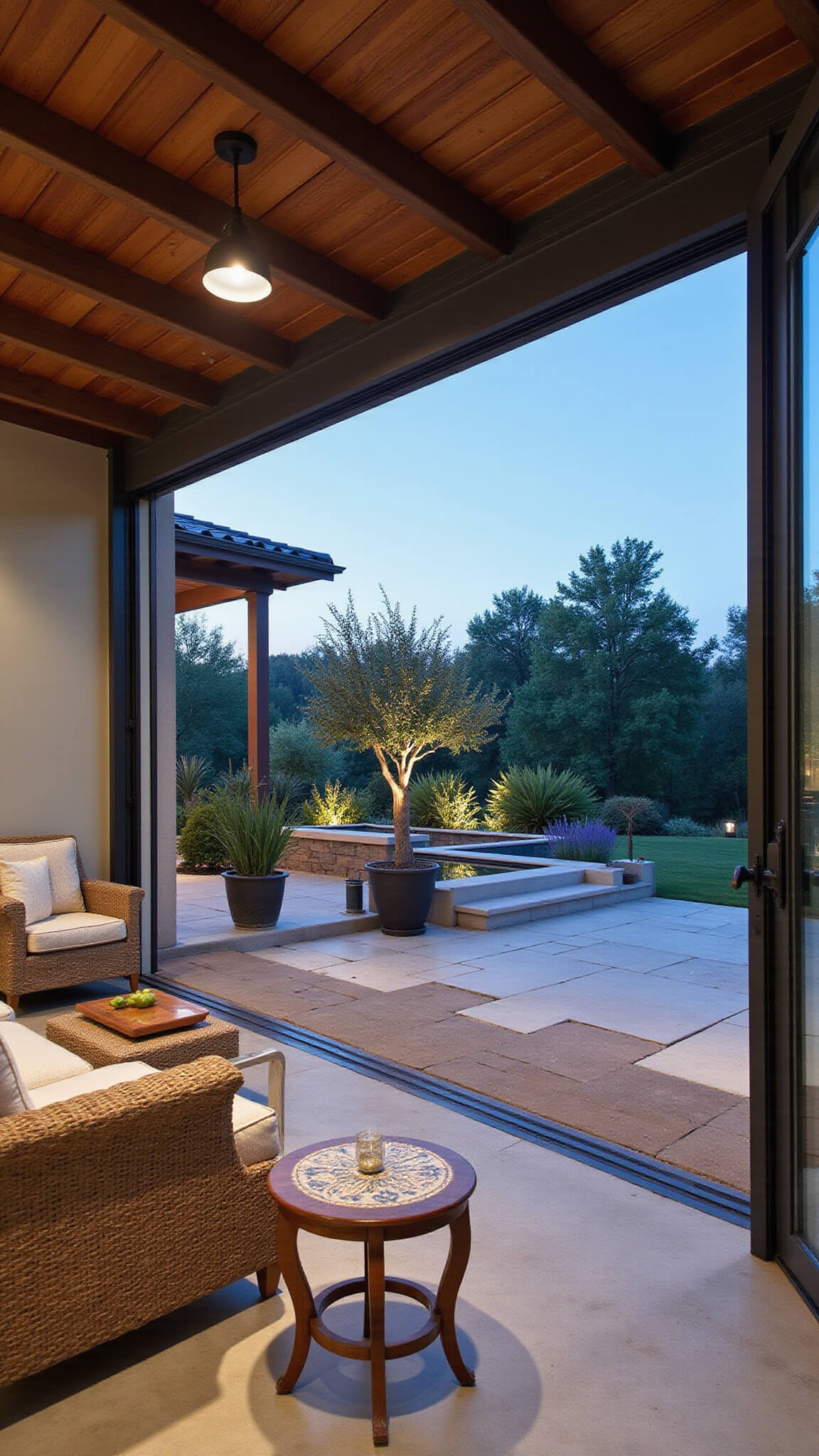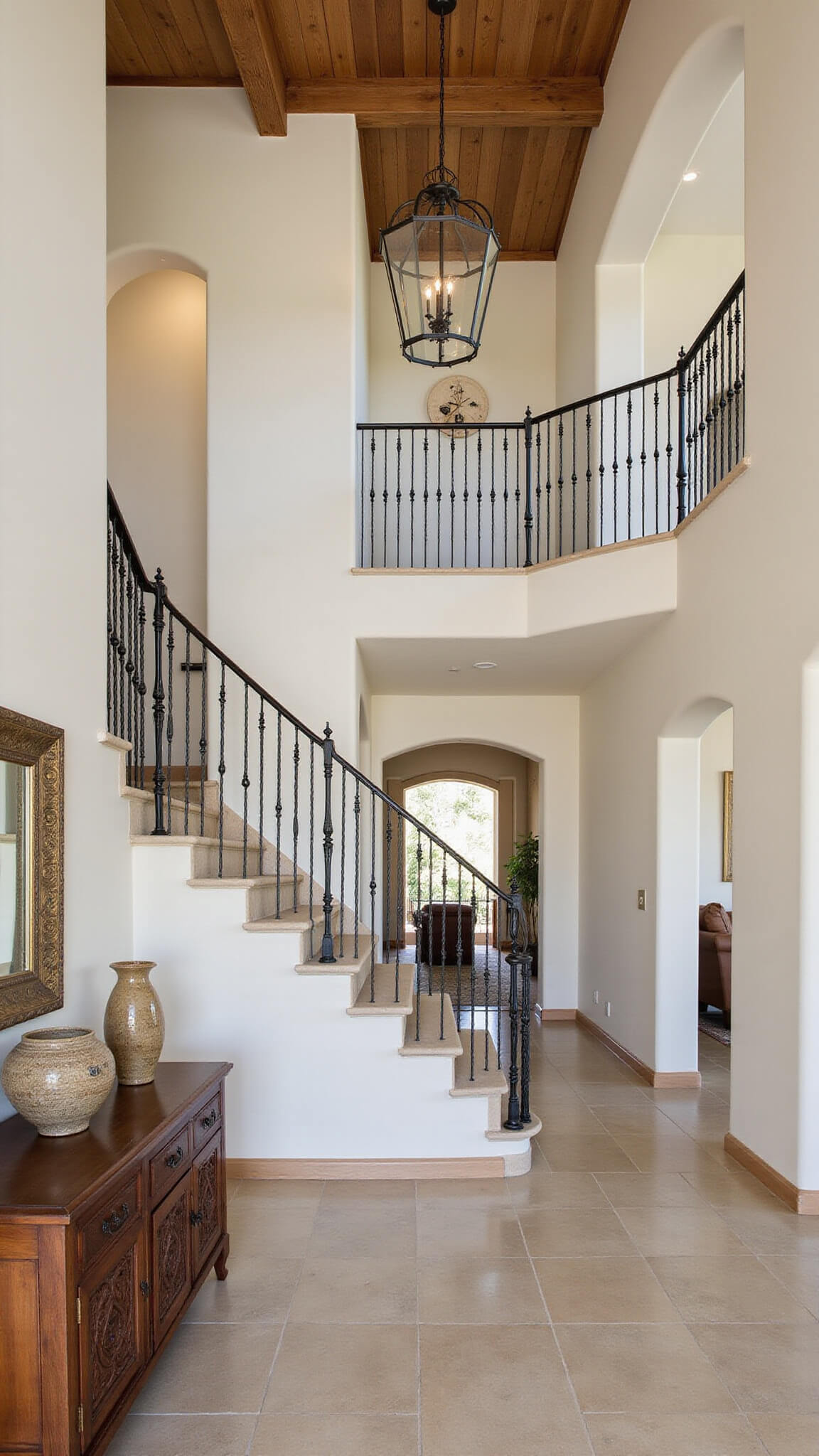What Makes Modern Mediterranean Design So Special?
This style borrows from countries that border the Mediterranean Sea—Italy, Spain, Greece, Morocco—but gives those traditional elements a contemporary twist.
The result? Spaces that feel warm, inviting, and sophisticated without being stuffy.
When I first started exploring this style, I was drawn to its ability to create serene environments that still have character and depth. It’s not just about looking pretty—it’s about creating a feeling.
Essential Elements of Modern Mediterranean Design
The Color Palette
Modern Mediterranean interiors embrace a specific color scheme:
- Base colors: Whites, creams, and warm neutrals
- Accent colors: Terra cotta, olive green, ocean blues, and deep yellows
- Contrast elements: Black or dark brown for grounding the space
I always recommend starting with a neutral base and then layering in those beautiful Mediterranean colors as accents.
Materials and Textures
The soul of Modern Mediterranean design lives in its materials:
- Natural stone – especially limestone and marble
- Warm woods with visible grain patterns
- Wrought iron for architectural elements and hardware
- Terracotta tiles for floors or decorative elements
- Natural fibers like jute, sisal, and linen
- Handcrafted ceramics in earthy tones
I once renovated my kitchen using limestone countertops and terracotta backsplash tiles. The result was absolutely stunning—authentic yet thoroughly modern.
Architectural Features
If you’re lucky enough to be working with architecture or renovating, consider these hallmarks:
- Arched doorways and windows
- Exposed wooden beams
- Plaster walls with texture or a hand-troweled finish
- Terracotta or encaustic tile floors
- Indoor-outdoor living spaces
Don’t worry if your home lacks these features naturally—you can introduce them through furniture choices and decorative elements.
Furniture Selection for Modern Mediterranean Spaces
Key Characteristics:
- Clean lines with subtle traditional details
- Natural materials like wood and rattan
- Comfortable yet tailored upholstery
- Mix of old and new pieces
- Built-in elements like window seats or banquettes
- Substantial scale without feeling heavy
I learned this lesson the hard way when I purchased a sofa that was too delicate and formal. When I replaced it with a deeper, more substantial piece in natural linen, the whole space came together.
Lighting That Creates Atmosphere
Lighting in Mediterranean homes should create a warm, inviting glow rather than harsh illumination.
- Iron chandeliers with a modern silhouette
- Woven pendant lights for texture and pattern
- Simple ceramic table lamps
- Wall sconces for ambient lighting
- Lanterns for indoor and outdoor spaces
The most magical Mediterranean spaces I’ve designed always incorporate multiple lighting sources at different heights.
Accessorizing with Authentic Touches
- Handcrafted ceramics in earth tones
- Woven baskets for storage and display
- Patterned textiles with geometric or traditional designs
- Potted olive trees, herbs, and Mediterranean plants
- Artwork depicting Mediterranean landscapes or abstracts
- Vintage or antique pieces with patina and character
When selecting accessories, I always ask myself: “Could this piece have a story behind it?”
How to Create Modern Mediterranean Spaces Room by Room
Living Room
- Furniture arrangement focused on conversation
- Comfortable seating in natural fabrics
- Textural elements like a sisal rug and linen curtains
- A mix of wood tones
- Minimal but meaningful accessories
Kitchen
- Open shelving displaying ceramics
- Natural stone or wood countertops
- Handmade tile backsplashes
- Warm metals like brass or copper
- Islands or tables for gathering
Bedroom
- Simple, substantial bed frame in wood or iron
- White or neutral bedding with texture
- Minimal window treatments
- Natural fiber rugs
Bathroom
- Plaster or textured walls
- Stone vessel sinks
- Frameless mirrors or iron frames
- Open shelving with baskets
- Handmade tile in subtle patterns














